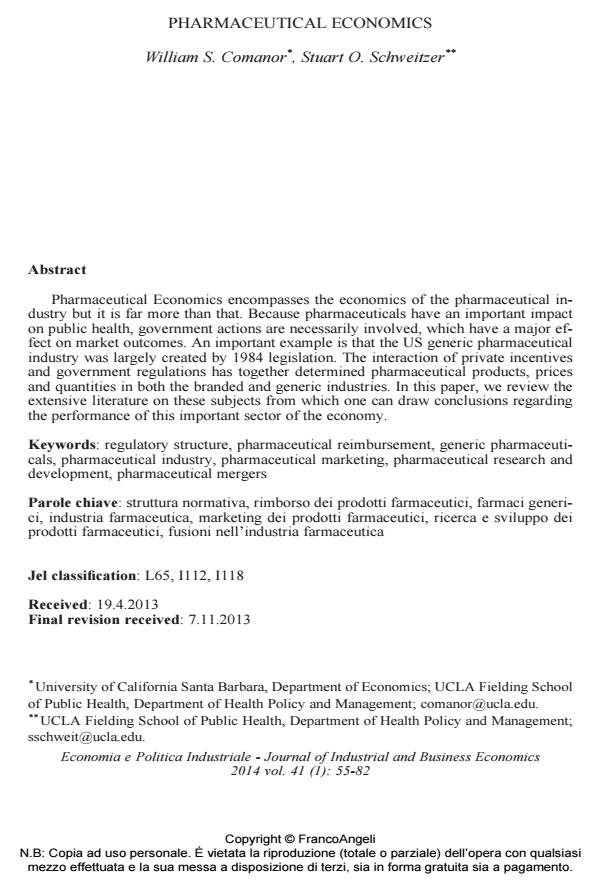Pharmaceutical economics
Journal title ECONOMIA E POLITICA INDUSTRIALE
Author/s William S. Comanor, Stuart O. Schweitzer
Publishing Year 2014 Issue 2014/1
Language Italian Pages 28 P. 55-82 File size 101 KB
DOI 10.3280/POLI2014-001004
DOI is like a bar code for intellectual property: to have more infomation
click here
Below, you can see the article first page
If you want to buy this article in PDF format, you can do it, following the instructions to buy download credits

FrancoAngeli is member of Publishers International Linking Association, Inc (PILA), a not-for-profit association which run the CrossRef service enabling links to and from online scholarly content.
Pharmaceutical Economics encompasses the economics of the pharmaceutical industry but it is far more than that. Because pharmaceuticals have an important impact on public health, government actions are necessarily involved, which have a major effect on market outcomes. An important example is that the US generic pharmaceutical industry was largely created by 1984 legislation. The interaction of private incentives and government regulations has together determined pharmaceutical products, prices and quantities in both the branded and generic industries. In this paper, we review the extensive literature on these subjects from which one can draw conclusions regarding the performance of this important sector of the economy.
Keywords: Struttura normativa, rimborso dei prodotti farmaceutici, farmaci generici, industria farmaceutica, marketing dei prodotti farmaceutici, ricerca e sviluppo dei prodotti farmaceutici, fusioni nell’industria farmaceutica
Jel codes: L65, I112, I118
William S. Comanor, Stuart O. Schweitzer, Pharmaceutical economics in "ECONOMIA E POLITICA INDUSTRIALE " 1/2014, pp 55-82, DOI: 10.3280/POLI2014-001004